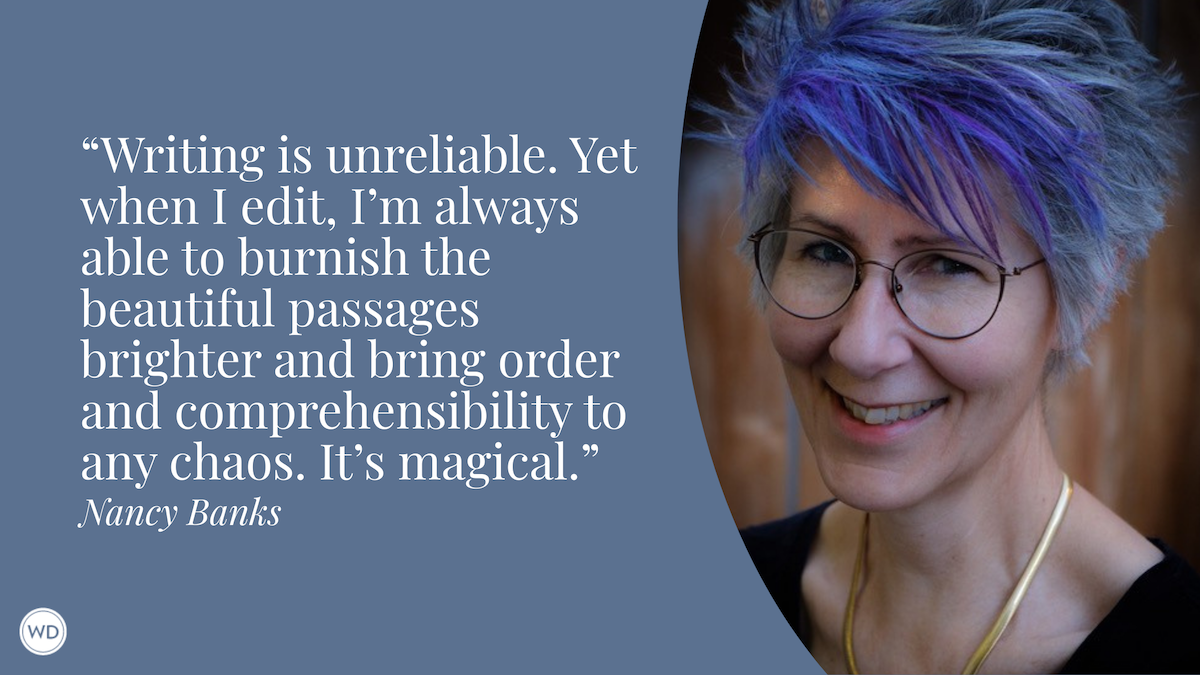5 Tips for Crafting a Novel-in-Stories
Bringing together smaller pieces of a larger whole can make for a compelling reading experience. Here, author Scott Russell Sanders shares 5 tips for crafting a novel-in-stories.
My older sister and I attended a rural Ohio elementary school, where her eighth-grade class read Sherwood Anderson’s Winesburg, Ohio (1919). “What’s it about?” I asked her.
“A bunch of weird people,” she answered. By the time I reached eighth grade, three years later, the school board had banned the book, which they called scandalous. Naturally, I tracked down a copy in the public library and read it in secret, on the lookout for scandal, which I assumed would have to do with sex, a subject as murky for me at that age as the idea of God.
The book posed a different kind of riddle for publishers. When Anderson began shopping around the manuscript of Winesburg, Ohio, editors didn’t know what to make of it. Lacking an overarching plot, it wasn’t a novel; but it wasn’t an assorted collection of short stories, either. A consistent narrator’s voice runs through the book, introducing characters who are often linked by friendship or family, and they all live in the same small town, which emerges as a character in its own right, stodgy and stifling; several characters tell their stories to a young newspaper reporter named George Willard, who yearns to escape the confines of his hometown, and who succeeds in doing so by the last page as he boards a train headed for the big city.
Today a publisher would recognize Winesburg, Ohio as a novel-in-stories, a hybrid that combines elements from two distinct literary forms. While the label is new, such hybrids are as old as storytelling. Think of Homer’s Odyssey, which strings marvelous tales onto the thread of Odysseus’s journey home from Troy to his wife in Ithaca; think of Scheherazade, ingenious heroine of One Thousand and One Nights, who staves off death at the hands of a jealous king by tantalizing him at bedtime with stories to be continued the following day; think of Chaucer’s pilgrims in Canterbury Tales, competing to see who can tell the most engaging story as they travel toward the cathedral.
From the earliest written narratives to the latest novel-in-stories, authors have devised various ways of binding separate tales into a larger, richer whole. Here are five of the most common strategies, each one illustrated by books worthy of close study.
IndieBound | Bookshop | Amazon
[WD uses affiliate links.]
Narrative Frame
As Homer and Chaucer attached a series of tales onto journeys, or Anderson linked tales to a young man’s quest for broader horizons, so other writers, ancient and modern, have used narrative frames to connect stories that might otherwise seem unrelated.
In The House on Mango Street (1984), Sandra Cisneros gathers 44 short prose pieces, all told in the voice of Esperanza, a Chicana girl growing up in Chicago. In an introduction to a later edition, Cisneros remarks that she thought of the book not as a novel but as a “jar of buttons.” The “jar,” the container, is a frame story about a year in the life of Esperanza as she enters adolescence, and the “buttons” are sketches of family and friends, descriptions of the neighborhood, vignettes about reconciling Mexican and American identities, scenes from a dawning awareness of sex, and other passages from the young girl’s coming-of-age.
Storyteller
The voice of a storyteller may provide a sense of cohesion in a series of tales, especially if the storyteller, like Esperanza or Scheherazade, is a central figure in the narrative.
The table of contents in Tim O’Brien’s The Things They Carried (1990) lists 22 stories, all of which focus on a platoon of American soldiers in Vietnam during the war. Bound together by the setting, by the loyalties of a close-knit group, and by the travails of war, the tales are also united by the voice of the storyteller, who appears in the book as a character named Tim O’Brien. The author is a participant, a Vietnam vet who has lived through or imagined the episodes he recounts. His memories and emotions saturate every story, blending fact and fiction, creating an atmosphere that merges the stories into a tragic, haunting saga.
Linked Characters
The soldiers in O’Brien’s platoon show up in one another’s stories, sometimes playing a leading role, sometimes a bit part. This interweaving of characters is another common strategy for joining tales.
In Gloria Naylor’s The Women of Brewster Place: A Novel in Seven Stories (1982), each story treats one of seven Black women as a central figure, and one or more of the others as secondary, and all carry personal histories that leave them as scarred as the rundown apartment complex where they live.
An especially rich example of stories bound together by kinship among characters is Louise Erdrich’s Love Medicine (1984; expanded edition, 2009). Reading this book is like working a genealogical jigsaw puzzle, as one discovers that the narrators and characters are members by marriage or descent of the same Chippewa families. The stories, like the characters, are shaped by this indigenous heritage and by a common geography, the landscapes of North Dakota and Minnesota.
Setting
Love Medicine and The Women of Brewster Place illustrate how stories may be integrated by sharing a richly-evoked setting. To see how setting can serve as a unifying element, read Wendell Berry’s A Place in Time (2013), which contains 20 stories set in the fictional village of Port William, Kentucky; or read Close Range (1999), one of three collections by E. Annie Proulx subtitled Wyoming Stories.
Theme
Story collections that create the strongest impression of coherence combine multiple unifying devices. The eight stories in Willa Cather’s Youth and the Bright Medusa (1920) present variations on a single theme—the challenge of pursuing a life devoted to art in a culture devoted to commerce. Aside from this theme, however, the stories share no common element—no narrative frame, storyteller, linked characters, or consistent setting—and thus the collection remains a miscellany.
By contrast, V. S. Naipaul’s Miguel Street (1959) displays all of these unifying strategies, including a common theme of lives thwarted by personal flaws or cramped circumstances. The 17 stories are set in the same neighborhood in Port of Spain, Trinidad. They are narrated by a boy who grows up on the street, and the characters he tells us about reappear in story after story. Each of the main characters has failed in some way—a boy aspiring to become a doctor becomes a garbage collector; a self-proclaimed poet never writes a poem; a carpenter never builds a house; a tailor never makes a suit; a collector of books doesn’t read. To avoid being trapped in a life smaller than his dreams, the unnamed narrator decides he must leave the island, and on the final page he approaches the airplane that will carry him away.
Scott Russell Sanders is the author of Small Marvels (June 2022; Indiana University Press), a novel-in-stories that employs all the unifying techniques discussed here, and more. Set in an Indiana town where peculiar things happen, the book features three generations of a boisterous family who live together in patched-up house, where they get by on scant income and abundant love. Part folktale, part tall tale, part comic romance, Small Marvels revels in the wonders of everyday life. This is the latest of more than 20 books of fiction, essays, and personal narrative by Sanders, a Distinguished Professor Emeritus of English at Indiana University and a fellow of the American Academy of Arts and Sciences. You can visit him online at scottrussellsanders.com.









